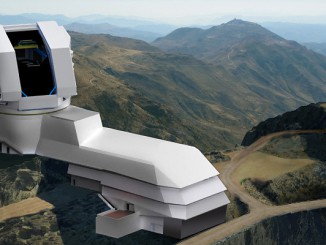
Current theories about the evolution of the universe predict much higher levels of dark energy, the mysterious force that is speeding up the expansion of the cosmos, than are actually observed. That’s a good thing, if not yet understood, because if dark energy was much more powerful, matter would fly apart much sooner, before stars, planets and life could form and evolve.
But why is our universe so lucky? Why does it feature a relatively modest level of dark energy?
One way to explain the conundrum is to imagine a multiverse, an infinite tapestry of isolated pocket universes randomly popping into existence, inflating and then expanding at different rates based on different levels of dark energy and even different physical constants. Stars, planets and life would be possible in some of these pocket universes, but not in others.
Running powerful computer simulations, researchers at Durham University in the UK, the University of Sydney, Western Sydney University and the University of Western Australia have found that adding up to a few hundred times the dark energy observed in our universe would not have a major impact on the formation of stars and planets.
And that implies life could arise in a much broader range of locales in the Multiverse if such isolated universes do, in fact, exist.
“For many physicists, the unexplained but seemingly special amount of dark energy in our Universe is a frustrating puzzle,” said Jaime Salcido, a postgrad student in Durham University’s Institute for Computational Cosmology.
“Our simulations show that even if there was much more dark energy or even very little in the Universe then it would only have a minimal effect on star and planet formation, raising the prospect that life could exist throughout the Multiverse.”
Added Luke Barnes at Western Sydney University: “The Multiverse was previously thought to explain the observed value of dark energy as a lottery – we have a lucky ticket and live in the Universe that forms beautiful galaxies which permit life as we know it.”
“Our work shows that our ticket seems a little too lucky, so to speak,” he said. “It’s more special than it needs to be for life. This is a problem for the Multiverse. A puzzle remains.”
The unexpected results of the computer simulations could be problematic for theories of a Multiverse where one might expect 50 times more dark energy than actually observed.
“The formation of stars in a universe is a battle between the attraction of gravity, and the repulsion of dark energy,” says Richard Bower, a researcher at the Institute for Computational Cosmology. “We have found in our simulations that universes with much more dark energy than ours can happily form stars. So why such a paltry amount of dark energy in our Universe?
“I think we should be looking for a new law of physics to explain this strange property of our Universe, and the Multiverse theory does little to rescue physicists’ discomfort.”



